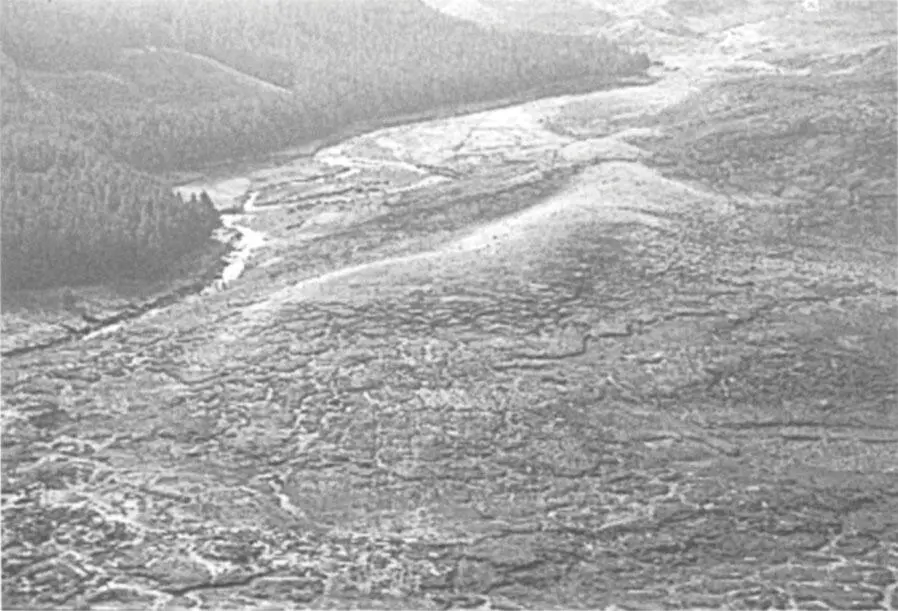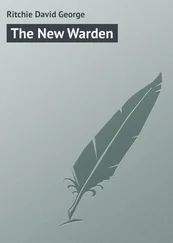How the precious alpine and arctic flora has fared under this new regime of unabated encroachment is not known. It is easier to assess the declining populations of moorland breeding birds such as the red grouse, merlin, hen harrier, and even of the Irish hare. Other impacts on upland and mountain flora come from burning, reclamation of moorland through drainage, afforestation and the application of a wide range of chemical fertilisers, often by air.

Erriff Valley, Co. Mayo. Excessive grazing by sheep (A. Walsh).
The arctic-alpine flora
David Webb, doyen of modern Irish botanists, in a critical review of the flora of Ireland in its European context, concluded that there were 16 genuine arctic-alpines in the Irish flora. 7His criteria were that the plant ‘must be fairly widespread in the arctic and sub-arctic regions of Europe and must reappear at high altitudes (at least up to 2,000 m) in the Alps (often also in the Pyrenees). But it must be scarce or absent in the intervening areas for otherwise it becomes merged in the main mass of northern continental species.’ He excluded any species that was found at low altitudes south of about 54°–55°N and any occurring in Central Europe at altitudes below 800 m in the immediate neighbourhood of high mountains. Using these criteria he excluded the following species often described by many different authorities as arctic-alpines: alpine saxifrage, marsh saxifrage, northern rock-cress, stiff sedge, spring sandwort, bearberry, cowberry and spring gentian. While all the these species are arctic they do not fulfil Webb’s other arctic-alpine criteria. According to Webb the spring gentian is a well-known example of incorrect geographic placement. It is often assumed – because of its association with mountain avens in the Burren, Co. Clare, and in the high Alps – to have an identical geographic distribution to mountain avens which is a true arctic-alpine. However, the spring gentian is common in central and southern Germany below 800 m and also present in the karst country of Slovenia. Moreover, its representation in the Arctic is extremely meagre, being confined to a few locations in arctic Russia.
The arctic-alpine species occurring in Ireland, according to Webb’s criteria, are alpine lady’s-mantie, fringed sandwort, hoary whitlowgrass, mountain avens, chickweed willowherb, mountain sorrel, alpine meadow-grass, alpine bistort, roseroot, dwarf willow, alpine saw-wort, yellow saxifrage, purple saxifrage, starry saxifrage, moss campion and alpine meadow-rue. Webb also identified the following seven ‘alpine’ and ‘arctic-sub-arctic’ species, some with reservations: alpine: recurved sandwort; alpine (with reservations): large-flowered butterwort and Irish eyebright; arctic-sub-arctic. Scots lovage and oysterplant; arctic-sub-arctic (marginal): water sedge and alpine saxifrage.
The cloudberry, which has one station in Ireland on the Tyrone side of the Tyrone/Derry county boundary in the Sperrin Mountains, is usually thought to deserve in other texts the appellation ‘arctic-sub-arctic’ but, according to Webb, it is too widespread south of the Baltic, in north Germany and Poland, to qualify for that status. Therefore it is not included in any of the above categories. All the seven ‘marginal’ species listed above are presumed to be arctic in origin, and to have spread southwards in front of the glaciers without going far enough to get up high in the Alps, Pyrenees or Carpathians.
In his seminal paper ‘On the range of flowering plants and ferns on the mountains of Ireland’ the great Irish botanist Henry Chichester Hart considered that 13 species qualified as ‘alpines’ but without giving precise criteria. Hart was perhaps the most intrepid and adventurous of all explorers of Irish mountains with an unrivalled knowledge of Irish mountain flora. His list of alpines is important as a tool for comparing the floras of various mountains throughout Ireland: cloudberry, northern bedstraw, the hawkweed Hieracium anglicum, bearberry, cowberry, juniper, stiff sedge, blue moor-grass, parsley fern, holly fern, green spleenwort, lesser clubmoss and quillwort. None meet the Webb criteria of arctic-alpines. 8
Alpine and arctic-alpine species are both rare and thinly spread throughout the country. Concentrations occur principally in the coastal counties, where most mountain ranges are found, with more species in the northern than in the southern parts of the island. The elevation at which they occur increases from the north to south as temperatures are higher in the south and thus more elevation is required to find a suitable cold spot. Of 17 species analysed by Praeger that were common to the Donegal–Derry and Kerry–Cork mountains, the mean lower limit in the north was 168 m while in the south it was approximately double that, illustrating one of the few impacts of latitude on the Irish flora. A similar comparison for 12 species found in western and eastern Ireland, showed that the mean lower limit was 326 m in Down–Wicklow compared with 219 m for Mayo–Galway, a reaction thought to be due to the wet and windy conditions along the western seaboard which effectively lower the temperatures. 3
One of the curious features of alpine plants in Ireland is that many of them do not remain perched high up on the mountains but descend down to sea level and into the countryside, sometimes well away from their alma mater. In fact, even when on the mountains they prefer reasonable to dizzy heights. Praeger looked at their distribution in relation to elevation in Ireland and found that the number of species increased steadily as one travelled towards the summit with a maximum number of 19 species at 300 m above sea level. Thereafter their numbers decreased equally steadily. 9Praeger also noted that 16 of the 42 so-called Watsonian ‘highland’ plants (including arctic-alpines and alpines) occur down to sea level. In fact, most Irish summits have a paltry flora, generally almost devoid of alpines and arctic-alpines. These are happier growing at lower levels, in more favourable habitats where, for instance, there are outcrops of mineral-rich rocks, and the ground is free from tall vegetation.
A few of the alpines do not give in to this ‘erratic’ behaviour but, as Hart observed, they are not numerous: ‘Of those more thoroughly alpine plants which never descended to sea level in these mountains (or elsewhere in Ireland), only three are ever met with on the exposed summits or outer ridges.’ 8They were alpine clubmoss, dwarf willow and stiff sedge. As to the species that will occur very high up, Praeger listed eight that persisted above 914 m on the Macgillycuddy’s Reeks, Co. Kerry. 3The species, with their maximum recorded altitudes in Ireland were: starry saxifrage (1,036 m), alpine hair-grass (1,027 m), stiff sedge (1,006 m), green spleenwort (960 m), mountain sorrel (960 m), roseroot (960 m), alpine meadow-grass (945 m) and dwarf willow (930 m). These, together with the alpine clubmoss, could be taken as the hard core of the Irish alpine and arctic-alpine flora.

Juniper is common on some mountains, where the subspecies Juniperus communis subsp. nana is mainly found on siliceous rocks, always growing prostrate.
Most Irish summits – generally covered by thin peat or just bare soil and stones – make drab spots for flowers, whether or not of the alpine kind. One wishing to find ‘summit’ flowers might well have to abseil down along the north-facing cliffs and scarps in order to peruse the nooks and crannies and the rock overhangs. Praeger – himself a fearless cliffhanger – listed 13 of these core ‘summit’ plants, based on an analysis of the flora of the seven highest Irish peaks. They were tormentil, heath bedstraw, bilberry, heather, sheep’s sorrel, crowberry, heath rush, great wood-rush, hare’s-tail cottongrass, tufted hairgrass, sweet vernal-grass, sheep’s fescue and fir clubmoss.
Читать дальше














